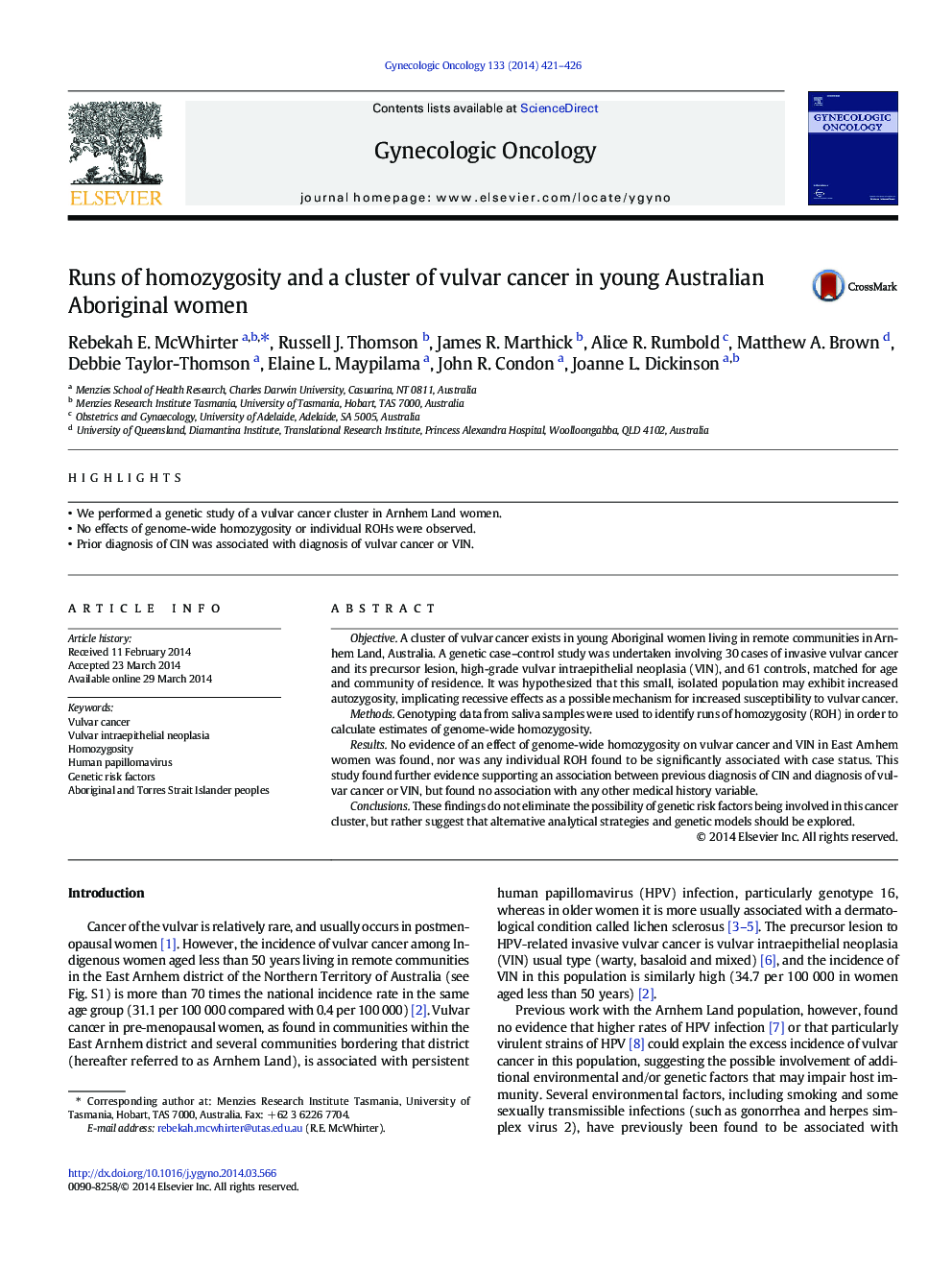| Article ID | Journal | Published Year | Pages | File Type |
|---|---|---|---|---|
| 3944597 | Gynecologic Oncology | 2014 | 6 Pages |
•We performed a genetic study of a vulvar cancer cluster in Arnhem Land women.•No effects of genome-wide homozygosity or individual ROHs were observed.•Prior diagnosis of CIN was associated with diagnosis of vulvar cancer or VIN.
ObjectiveA cluster of vulvar cancer exists in young Aboriginal women living in remote communities in Arnhem Land, Australia. A genetic case–control study was undertaken involving 30 cases of invasive vulvar cancer and its precursor lesion, high-grade vulvar intraepithelial neoplasia (VIN), and 61 controls, matched for age and community of residence. It was hypothesized that this small, isolated population may exhibit increased autozygosity, implicating recessive effects as a possible mechanism for increased susceptibility to vulvar cancer.MethodsGenotyping data from saliva samples were used to identify runs of homozygosity (ROH) in order to calculate estimates of genome-wide homozygosity.ResultsNo evidence of an effect of genome-wide homozygosity on vulvar cancer and VIN in East Arnhem women was found, nor was any individual ROH found to be significantly associated with case status. This study found further evidence supporting an association between previous diagnosis of CIN and diagnosis of vulvar cancer or VIN, but found no association with any other medical history variable.ConclusionsThese findings do not eliminate the possibility of genetic risk factors being involved in this cancer cluster, but rather suggest that alternative analytical strategies and genetic models should be explored.
